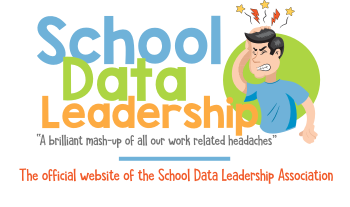Standard 1 - Engaging and Supporting All Students in Learning
Teachers know and care about their students to engage them in learning. They connect learning to students’ prior knowledge, backgrounds, life experiences, and interests. They connect subject matter to meaningful, real-life contexts. Teachers use a variety of instructional strategies, resources, and technologies to meet the diverse learning needs of students. They promote critical thinking through inquiry, problem solving, and reflection. They monitor student learning and adjust instruction while teaching.
1.5 - Promoting critical thinking through inquiry, problem solving, and reflection
As teachers develop, they may ask, “How do I…” or “Why do I…”
- encourage students to use multiple approaches and solutions to solve problems?
- encourage students to ask critical questions and consider diverse perspectives about subject matter?
- provide opportunities for students to think about, discuss, and evaluate content?
- ask questions to facilitate discussion, clarify, and extend students’ thinking?
- support students to think and communicate with clarity and precision?
- help students apply previous learning to new situations?
- encourage students to create, imagine, and innovate?
- help students to develop and use strategies and technologies for accessing knowledge and information?
1. Encouraging Students to Use Multiple Approaches and Solutions to Solve Problems
• Resource: Edutopia: Multiple Approaches to Problem Solving
• Description: This article provides strategies for encouraging students to use various approaches to solve problems, fostering creativity and adaptability in learning.
• Resource: Cult of Pedagogy: The Power of Multiple Solution Paths in Math
• Description: Focused on math instruction, this resource emphasizes the benefits of allowing students to explore multiple solution paths to develop deeper understanding and flexibility.
2. Encouraging Students to Ask Critical Questions and Consider Diverse Perspectives About Subject Matter
• Resource: Teaching Tolerance: Encouraging Critical Thinking About Diverse Perspectives
• Description: This resource outlines strategies for encouraging critical thinking and incorporating diverse perspectives into classroom discussions.
• Resource: Critical Thinking Foundation: Strategies for Teaching Critical Thinking
• Description: Offers a comprehensive approach to teaching critical thinking, with practical strategies for encouraging students to question and analyze information critically.
3. Providing Opportunities for Students to Think About, Discuss, and Evaluate Content
• Resource: Harvard Project Zero: Visible Thinking
• Description: Visible Thinking routines promote deep thinking and encourage students to reflect on content. The resource provides various thinking routines to facilitate this process.
• Resource: National Council for the Social Studies: Structured Academic Controversy
• Description: This teaching strategy encourages students to engage in thoughtful discussions and debates on controversial issues, fostering critical evaluation and discussion skills.
4. Asking Questions to Facilitate Discussion, Clarify, and Extend Students’ Thinking
• Resource: TeachThought: 100 Questions That Help Students Think Critically
• Description: A list of 100 questions designed to promote critical thinking in students, useful for sparking discussions and clarifying thinking.
• Resource: ASCD: Questioning for Classroom Discussion
• Description: Discusses effective questioning techniques that promote deeper understanding and student engagement in classroom discussions.
5. Supporting Students to Think and Communicate with Clarity and Precision
• Resource: AVID: Socratic Seminars and Tutorials
• Description: Provides a framework for Socratic Seminars, which help students articulate their thoughts clearly and listen actively to others.
• Resource: Project-Based Learning: Writing and Communication Skills
• Description: Explores how project-based learning can help students improve their writing and communication skills through clear articulation of their ideas.
6. Helping Students Apply Previous Learning to New Situations
• Resource: Transfer of Learning: Applying Knowledge in New Contexts
• Description: Strategies for helping students transfer knowledge and skills from one context to another, promoting deeper understanding and adaptability.
• Resource: Understanding by Design: Teaching for Transfer
• Description: Focuses on designing curriculum that encourages students to apply learned concepts to new and varied situations.
7. Encouraging Students to Create, Imagine, and Innovate
• Resource: International Society for Technology in Education (ISTE): Creativity and Innovation Standards
• Description: ISTE standards promote creativity and innovation in education, with resources and tools for fostering these skills in students.
• Resource: Maker Education: Fostering Creativity Through Making
• Description: Offers resources and guidance on incorporating maker education into the classroom to encourage creativity, innovation, and problem-solving.
8. Helping Students to Develop and Use Strategies and Technologies for Accessing Knowledge and Information
• Resource: Common Sense Education: Digital Literacy and Citizenship Curriculum
• Description: Provides a comprehensive curriculum for teaching digital literacy and responsible technology use, including strategies for accessing and evaluating information.
• Resource: Tech Integration: Tools and Strategies for the Classroom
• Description: A guide to integrating technology in the classroom to enhance learning, providing practical strategies and tools for teachers.
These resources provide a wide range of strategies, tools, and methodologies to help teachers meet the diverse needs of students while promoting critical thinking through inquiry, problem solving, and reflection. They also support the development of a classroom environment that encourages creativity, innovation, and meaningful engagement with subject matter.
